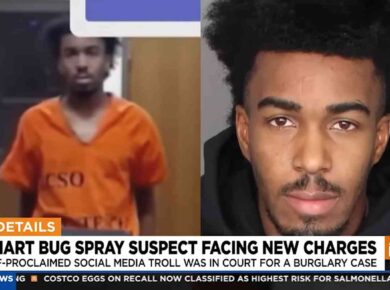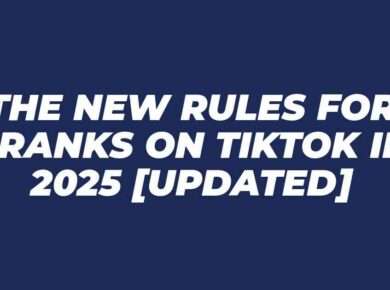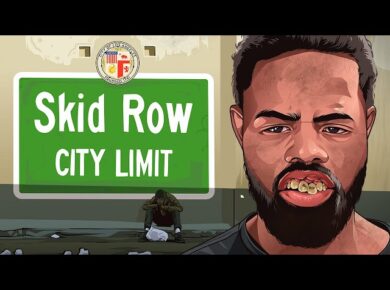Family influencers and “kidfluencers” have become major players on platforms like YouTube, TikTok, and Instagram, captivating millions with their day-to-day lives. However, as children at the heart of this content grow older, questions arise about their real names, ages, and their right to privacy. What happens when they want to step away from the spotlight? These challenges not only expose ethical dilemmas but also reveal significant legal gaps in protecting young participants in this industry. For more on the dynamics of family-focused content creation, check out Anaya Kandhal’s profile, a rising name in the world of family influencers.
Table of Contents
The Rise of Family Influencers
Family influencers have taken center stage in recent years, captivating audiences with their relatable content and behind-the-scenes look at daily life. They’ve built empires by sharing everything from morning routines to family vacations, creating a blend of entertainment and authenticity that resonates with millions. This phenomenon, however, is not without its complexities.
Behind the Scenes: How Family Influencing Works
Family influencers operate like mini production companies, often managing multiple social media platforms to keep their audiences engaged. The content creation process usually begins with brainstorming relatable topics or events that showcase their family dynamic. From playful pranks to heartfelt milestones, these moments are carefully planned and captured in ways that appear spontaneous to viewers.
Parents play an integral role in the success of family influencer accounts. They are typically the directors, editors, and producers, ensuring that the content adheres to a specific narrative or tone. The involvement of children raises ethical questions, as their participation often blurs the line between personal life and business. While some families thrive in this setup, others face challenges, especially as children age and express preferences about being featured.
Revenue generation for family influencers is multi-faceted. Primary income streams include:
- Sponsorship deals: Partnering with brands to promote products in videos or posts.
- Ad revenue: Monetizing content on platforms like YouTube.
- Merchandise sales: Developing and selling family-themed products ranging from clothing to home goods.
- Affiliate marketing: Earning commissions for promoting and linking products.
For a deeper dive into how influencers build successful careers, check out Yolo Aventuras, a family-based digital content group that has become a phenomenon in the social media space.
What Are The Earnings?
The earnings of family influencers vary widely, depending on factors like follower count, engagement rates, and revenue diversification. On platforms like Instagram and YouTube, micro-influencers with a few hundred thousand followers may earn tens of thousands of dollars annually, while prominent families with millions of fans can rake in millions yearly.
For example, a family influencer with one million views per YouTube video may earn between $3,000 and $5,000 from ad revenue alone, depending on their niche and location. Sponsorship deals further amplify these numbers, with average rates ranging from $10,000 to $50,000 per collaboration for larger accounts.
In many cases, families establish legal business entities to manage their earnings. This approach makes it easier to divide income among family members and maintain transparency. However, this financial structure can also result in disputes as children grow older and question their stake in the content they helped create.
For a closer look at influencer income ranges, ChainsFR provides detailed insights into how some creators manage to generate millions annually.
The earnings potential for family influencers is undeniable. But as their children mature, questions about consent, financial rights, and their real names’ anonymity in such a public sphere remain at the forefront. With a growing demand for regulation, the future of family influencing hangs in a delicate balance.
When Children Become Kidfluencers
In the world of family influencers, children often take an active role, becoming “kidfluencers” whose lives are showcased online for millions to see. While this can lead to financial opportunities and fame, it also brings complex legal, ethical, and emotional challenges. As the industry has grown, so too have concerns about the well-being and rights of these young participants.
Legal Protections and Ethical Questions
The laws surrounding child influencers remain a patchwork, with significant legal gaps in many regions. In California, a step forward was taken with legislation requiring parents to set aside a portion of a child influencer’s earnings into a trust account, similar to protections established for child actors. However, not all states or countries have enacted such safeguards, leaving many children without financial or legal protection.
For instance, children often lack the ability to control how their image or “real name” is used in content, even as they grow older. This raises ethical questions about consent and ownership. Are these children being properly compensated for their contributions, or are they being treated as unpaid labor? The lack of standardized regulations creates a gray area that can easily be exploited.
Additionally, the blurred line between family life and business makes it difficult to separate parental roles from managerial duties. As parents manage their children’s careers, who ensures the child’s best interests come first? Cases like those discussed in Ruby Franke’s story highlight the dangers when adequate protections are not in place.
Emotional and Psychological Impact
Constant public exposure can take a toll on a child’s mental and emotional health. Being in the spotlight from a young age often means living under constant scrutiny, which can lead to anxiety, low self-esteem, and the pressure to perform. Think about the stress of a school performance—now imagine that playing out daily, but for millions of strangers online.
The invasion of privacy is another serious concern. Children featured prominently in family content rarely have a say in what is shared about them. Milestones, tantrums, and deeply personal moments can be broadcast to the world, potentially leaving a digital footprint that lasts a lifetime. For some, this can create feelings of embarrassment or resentment as they grow up.
Moreover, the emotional consequences aren’t just felt by the children themselves but can ripple throughout the family. Tensions may arise when children express a desire to stop participating, especially when content creation is the family’s primary source of income. For more on the emotional complexities of this industry, explore Jodi Hildebrandt’s controversial case, which delves into instances of extreme psychological and physical harm.
Understanding the potential consequences of constant exposure and the lack of autonomy is essential. Both legal protections and emotional well-being must be prioritized for this growing generation of digital natives.
What Happens When Kids Want Out?
As the children of family influencers grow older, some start to express discomfort with being featured online or even demand a complete exit from public life. This raises critical ethical, emotional, and legal questions for families whose livelihoods depend on content creation. What happens when kids, who were once willing participants, decide they’ve had enough?
Famous Cases of Conflict
The issue of children wanting to leave the influencer lifestyle is not hypothetical—there have been real-world examples that highlight the complexities of this situation. One notable example is the family behind the Kids Diana Show, where Diana became a global sensation at a very young age. With billions of views and millions of fans, her name and image became synonymous with the brand. However, as Diana aged, her parents faced increasing scrutiny over whether she fully understood the long-term implications of her online presence.
Similarly, controversies arose around the Stokes Twins, though primarily focused on the adults themselves, bringing to light the lack of oversight for minors involved in family-based channels. Instances like these underline the importance of ensuring that children genuinely want to participate in influencer activities, especially as they grow more aware of the public interest in their lives.
Public reception to children wanting out can vary. Some followers empathize, acknowledging the right to privacy and personal growth. Others, however, criticize these decisions, as it may disrupt the very content they subscribed to watch. From a legal perspective, conflicts often highlight the absence of comprehensive regulations protecting these young influencers. Laws like California’s Coogan Law, which safeguards child actors’ earnings, only recently started applying to digital creators, and even then, enforcement remains patchy.
Ensuring Consent and Balance
For families navigating the influencer world, striking the right balance between success and respect for their children’s autonomy is crucial. Here are practical tips to navigate this delicate terrain:
- Hold Regular Conversations: Parents should frequently check in with their kids, asking how they feel about being featured in content. A child who enjoys participating at age six might feel very differently by the time they turn 12.
- Introduce Opt-Out Policies: Allow children the ability to decline participation in videos or posts. This simple rule helps reinforce that their voice and choices matter.
- Set Boundaries: Clearly define what types of content are off-limits. For example, avoid sharing highly personal milestones or moments that may later cause embarrassment.
- Limit Screen Time: Protecting children from the pressure of constant filming is crucial. Time limits ensure they don’t view content creation as an endless obligation.
- Create Trust Accounts: Following models like the Coogan Law, earmark a portion of earnings for the child’s future. This safeguards their financial interests and ensures they benefit from their work.
Looking at the example of Vlad and Niki, their family’s success stemmed from maintaining a playful and pressure-free approach. Though their real names and ages are sometimes discussed publicly, their parents have taken measures to keep much of their lives private, showing how boundaries can coexist with thriving online brands.
Parents should also be mindful of the digital footprint children leave behind. Once a child’s image or “real name” is online, removing it entirely can be almost impossible. Striking a balance between building a successful platform and respecting the child’s right to privacy is not only ethical but ultimately better for everyone’s well-being long-term.
What Does the Future Hold for Family Influencers?
As family influencers face growing scrutiny and evolving challenges, the future of this niche remains uncertain. From content strategy shifts to legal advocacy, here’s how the industry is likely to adapt in the coming years.
Future Changes in Content Dynamics
Staying relevant in a constantly changing social media space requires family influencers to rethink their approach. The increased focus on children’s privacy and the potential for kids to opt out of public content means families may need to innovate to maintain their audience’s engagement.
1. Diversifying Content: Families may pivot towards less child-centric content, focusing instead on broader lifestyle themes like home decor, fitness, or travel. This shift can appeal to a wide range of viewers while respecting children’s growing need for privacy.
2. Bringing in New Voices: Some influencers may collaborate with non-family members, like experts or fellow creators, to add variety to their content. For example, creators like Ruby Franke initially gained traction by focusing heavily on family dynamics but later faced challenges due to a lack of diversification.
3. Balancing Public and Private Lives: Families may adopt a hybrid model, sharing curated moments while keeping deeply personal or private events offline. This strategy can create a sense of authenticity without exposing every aspect of their lives.
4. Using Technology: Emerging technologies like augmented reality (AR) and virtual reality (VR) could open new avenues for family influencers to interact with their audience. These tools allow content creators to remain innovative without relying solely on their children’s participation.
Adapting content strategies to align with new norms and ethical guidelines could not only extend an influencer’s career but also establish trust with their audience. Audiences are increasingly drawn to creators who demonstrate transparency and respect for their families’ boundaries.
The Role of Advocacy and Education
The family influencer space is also seeing a surge in advocacy for stronger legal protections and resources to safeguard children involved in online content creation. Movements advocating for regulation are not just about compliance; they are about ensuring these young participants have better futures.
Regulatory Efforts: Activists and organizations are pushing for global standards that protect child influencers. While California has implemented laws mandating trust accounts for children, many other regions remain unregulated. Without these protections, children risk being exploited—financially and emotionally—by a system that profits from their participation.
Educational Initiatives: Several organizations now focus on providing resources and training for influencers to maintain ethical practices. These include workshops on child labor standards, financial management education, and platforms for kids to voice their preferences in family decisions.
Highlighting Leadership: Influencers like Baby Shark – Pinkfong Kids’ Songs & Stories demonstrate the importance of balancing creative engagement with ethical practices. Their ability to innovate while minimizing overexposure of child participants serves as a model for others in the industry.
Parental Empowerment: Advocacy isn’t solely about laws—educating parents to manage both content and their children’s well-being is crucial. Initiatives encourage families to set boundaries, recognize red flags, and engage in discussions about the real impact on their kids’ mental health and future.
As these movements gain momentum, the industry could see significant shifts, with greater focus on accountability and children’s rights. Ensuring that young creators grow up with financial security, autonomy, and emotional well-being is paramount as family influencers evolve in the digital age.
Conclusion
The rise of family influencers has reshaped how we view modern entertainment, intertwining personal lives with public content. However, the ethical concerns surrounding children’s autonomy, privacy, and financial rights cannot be overlooked as they grow older and assert more control over their lives.
The future of family influencing depends on balanced approaches—ensuring children’s well-being while protecting their real names and personal lives from overexposure. Thoughtful regulation, parental mindfulness, and industry advocacy are crucial steps forward.
To support this evolving industry responsibly, audiences, creators, and policymakers must continue to push for stronger safeguards that prioritize the rights and dignity of young participants. Learn more about the dynamics of family-based content on platforms like Kimberly Loaiza’s profile, showcasing how creators juggle family life with digital careers.






